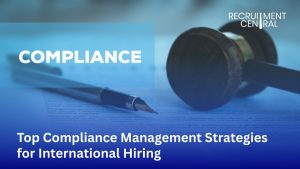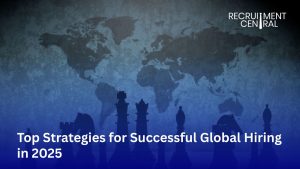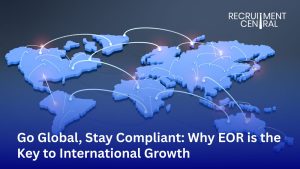AI has been enabling business to reform the whole structure of processes and make them more efficient and productive. The basics start from recruiting the right talent, but it’s the toughest amongst the many other processes.
AI being in the picture, now the whole hiring process could be automated and streamlined along with the enhancing efficiency, reducing bias, and improving the overall candidate experience.
It’s an undeniable fact that AI is already changing the whole way the HR teams used to work, by offering tools to refine processes, hire faster, make smarter decisions, and improve the candidate experience. As per SHRM, more than 42% of talent acquisition teams are already using AI extensively. How they are doing this, we will understand with this post.
Also Read: Navigating EOR Compliance: A Practical Guide
How AI Helps In Talent Acquisition
1. Analysing Needs
The hiring process starts by identifying a need within different teams of your organization. Requirements mostly vary from filling a vacated position, better distributing a team’s workload, or expanding the scope of organizational tasks.
2. Creating Recruitment Strategy
After the requirement has been identified for a specific role, the next step is to form job roles and responsibilities for the same. In the case of newly created positions, operations must clearly download to the HR on how the new role must align with their goals and purpose. You can simply start with planning how to run announcements on the new position, both internally and externally, set criteria for phases of candidate screening, how the interview process will proceed and the team involved in that .
3. Creating Job Descriptions
Next crucial step is to get a job description from the operations team and ask them to include a prioritized list of job skills, special qualifications, desired characteristics, and relevant experience. The job description must not be generic and later you can enhance it by including factors like regarding salary and benefits.
4. Advertising & Announcements
Experts suggest that you must start by notifying your existing workforce. Most of the time the whole task and cost of advertising the job stops there. If, however, you don;t find a right fit then go on external platforms. Leveraging several online platforms and word of mouth could be your best options to let the people know about it.
5. Shortlisting Analysis
Using the existing mechanism in place to get applications via email, an applicant tracking system (ATS), etc and later reviewing and shortlisting them. After you have shortlisted a batch of best options of qualified applications, the hiring team must review the remaining candidates and schedule the interviews.
6.Candidate Matching
Initial interviews start with introductory calls with HR representatives. This stage only is enough to determine if candidates possess the required qualifications to match the position and align with an organization’s scope, culture and values.
7. Interview Screening
It varies and depends upon the type of industry the company is in and the size of the organization and the process set by the hiring committee. Single or multiple rounds could be scheduled with candidates. Final interviews mainly include conversations with the company’s senior management or a more in-depth specific/generic discussion with an interviewer from the initial stage.
Also Read: What Are EOR Solutions and How Do They Work?
8. Applicant Assessment
After the interviewing process is completed, the company must assign applicants with one or more standardized tests. These assessments help to measure a wide range of variables which includes personality traits, problem-solving ability, team-building skills, reasoning, reading comprehension, emotional intelligence, and more.
9. Background Verification
Background checks are intended to review candidates’ history, verify employment history, any criminal records and eligibility, and also run credit checks.
10. Decision
After the background and the reference checks are completed the hiring staff then only identifies the ideal fits. Experts also suggest that hiring staff must also create a backup, in case the selected candidate fails the background check or they settle on no negotiations or in case of no show.
11. Job offer
The offer letter must be forwarded to the selected ones as soon as possible,a s you have been considering multiple ones for a single position, they might also have been in interviews with many. The HR team must decide internally which elements of the offer letter are negotiable, and which are not and then share with the candidate.
12. Onboarding
Onboarding the newly hires must be in a welcoming and professional way as it will help them get integrated in a desired manner. A well designed orientation program must be included as a part of the onboarding process, which ensures that your employee has a clear understanding of the expectations, the scope and their purpose of being with you.
Conclusion
Businesses over the globe are continuing to recognize the efficiency of data-driven, tech-enhanced inputs while they hire workforces. HR teams are now equipped with a lot, enabling them to come out of the conventional lengthy and inefficient process and hore smartly and as desired.







